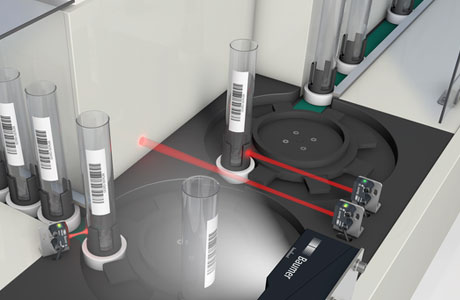Key Takeaway
When reviewing the specifications of a photoelectric sensor, key factors include voltage, current, and response time. Most sensors operate on 220–240 VAC or lower voltages like 24 VDC. Response times can be as fast as 1 millisecond, ensuring quick detection of objects. Additionally, the range depends on the sensor type—through-beam sensors can detect objects up to 30 meters, while diffuse sensors work within 1 meter.
Another important specification is the environmental rating, which indicates durability. Look for sensors that can operate in extreme temperatures, from -20°C to +40°C, and withstand harsh conditions like dust or moisture.
Key Performance Specifications to Look for in a Photoelectric Sensor
To evaluate a photoelectric sensor properly, you need to focus on several key performance specifications. The most important factors include its sensing range, which defines how far the sensor can detect an object, and the type of sensing mode—whether it’s through-beam, reflective, or diffuse. This defines how the sensor interacts with its surroundings. Don’t forget the sensor’s response time, which is the speed at which it detects an object and sends a signal. A fast response time is crucial for high-speed operations. Also, make sure to check its switching frequency. The higher it is, the faster the sensor can operate. Prioritize these factors based on your application needs, and you’ll be on the right track.

Understanding Sensitivity, Range, and Response Time
Industrial applications, three factors—sensitivity, range, and response time—work together to determine a photoelectric sensor’s effectiveness. Sensitivity refers to the sensor’s ability to detect objects of different sizes and materials, which is crucial in environments with inconsistent lighting or diverse objects. For instance, if you’re working in an area where the size of the objects varies, adjusting the sensor’s sensitivity can make all the difference in accurate detection.
On the other hand, range defines how far the sensor can detect objects. While longer ranges might be beneficial for detecting distant objects, sometimes shorter-range sensors are better suited for tight, controlled spaces. Response time, or how fast the sensor reacts to environmental changes, is equally essential, especially in fast-moving industries like automotive manufacturing. A quick response time ensures accurate detection, reducing downtime and improving efficiency. In short, understanding these three specifications will enable you to fine-tune your sensor setup for optimal performance.
How to Evaluate Input Voltage and Output Type Specifications
When installing photoelectric sensors in any industrial setup, ensuring that they are electrically compatible with your system is critical. A sensor’s input voltage—commonly between 12 to 24 VDC—must match your system’s electrical capabilities. If the voltage is too high or too low, it can result in equipment failure. Always check the sensor’s datasheet for this information to avoid costly mishaps down the road. New engineers often overlook this, but it’s one of the simplest ways to ensure a smooth installation.
Next, understanding the output type is essential for successful integration. NPN and PNP are the two most common output configurations. NPN sensors are current sinking, while PNP sensors are current sourcing. Each works differently in a circuit, so selecting the right one is crucial for proper communication with the system. In essence, making sure both the input voltage and output type align with your existing setup ensures that the sensors function without causing any system disruptions.
Environmental Ratings and Durability Considerations
In industrial settings, environmental durability is a top priority, as sensors often need to withstand harsh conditions. Environmental ratings, like IP (Ingress Protection), help you understand how well a sensor is protected against elements like dust and water. For example, a sensor with an IP67 rating can be used in conditions where it might be exposed to both dust and water immersion, making it ideal for rugged environments. It’s these ratings that help you determine the sensor’s longevity and reliability.
Beyond IP ratings, material choice also plays a significant role in sensor durability. In corrosive or abrasive environments, opting for sensors made of stainless steel rather than plastic can greatly improve their lifespan. Additionally, the temperature tolerance of the sensor should align with the operational environment—whether it’s extreme heat in manufacturing plants or freezing conditions in cold storage facilities. Matching the sensor’s durability with the environment it’s meant to function in is crucial for long-term performance.
What to Consider When Reviewing a Sensor’s Datasheet
Reading a sensor’s datasheet may seem daunting at first, but it holds the key to making informed decisions. The first thing to check is the operating voltage and current consumption—ensuring they align with your system is essential for smooth installation. These values give you a basic understanding of whether the sensor will integrate well with your existing setup without causing electrical issues.
Next, take a close look at the sensor’s sensing range, switching frequency, and environmental ratings. These factors will tell you how well the sensor will perform in your specific application. Other crucial aspects to review include the output type, response time, and connection methods. Don’t just skim through the datasheet; it’s a valuable document that can prevent costly mistakes and ensure that the sensor you choose will meet the operational demands of your system.
Conclusion
Understanding the specifications of a photoelectric sensor is essential for any engineer working in industrial automation. From performance factors like sensitivity, range, and response time, to electrical requirements like input voltage and output type, every spec plays a role in ensuring the sensor functions correctly in your application. Environmental ratings provide insight into the sensor’s durability, while reviewing the datasheet helps you avoid compatibility issues. By learning to interpret these details, you’ll not only select the right sensor but also optimize its performance for your system, ensuring smooth and efficient operations.
